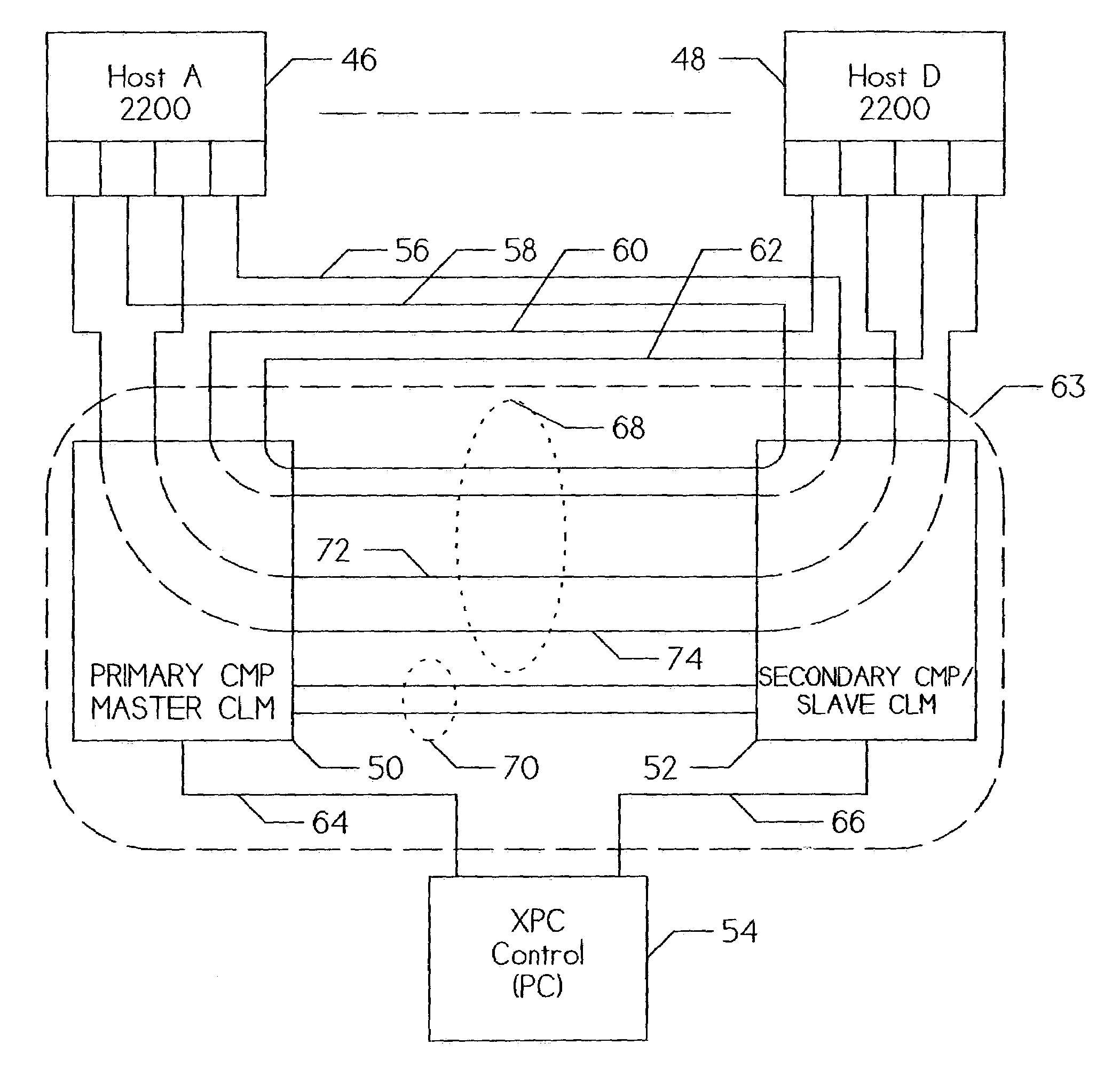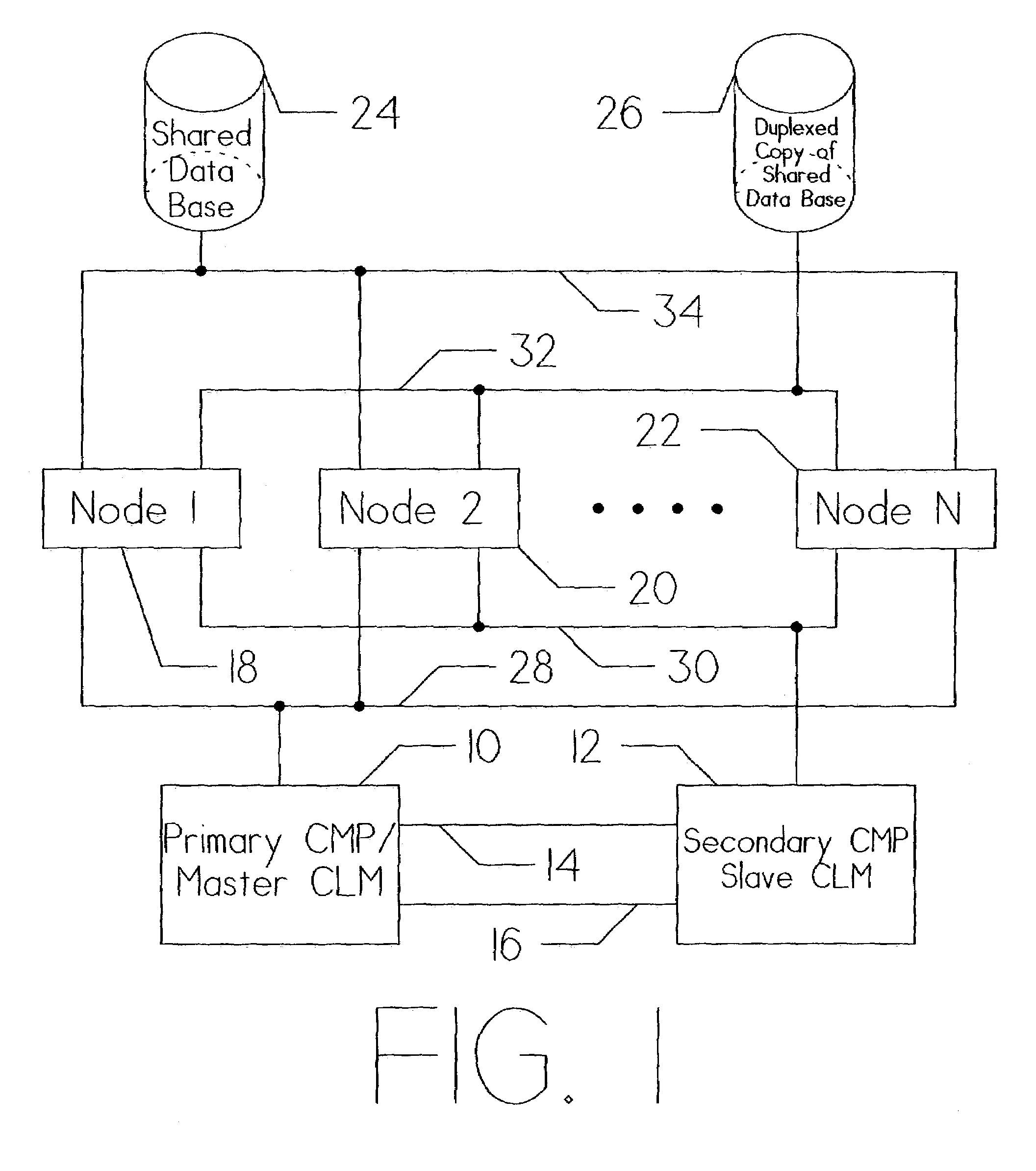Method for allowing a clustered computer systems manager to use disparate hardware on each of the separate servers utilized for redundancy
a computer system manager and clustering technology, applied in the field of data processing systems, can solve the problems of low reliability, commodity components, and lack of reliability features of more specialized hardware and software typically utilized for commercial, industrial, and defense applications, and achieve the effects of low cost, high reliability, and high performan
- Summary
- Abstract
- Description
- Claims
- Application Information
AI Technical Summary
Benefits of technology
Problems solved by technology
Method used
Image
Examples
Embodiment Construction
[0041]The present invention is described in accordance with several preferred embodiments which are to be viewed as illustrative without being limiting. These preferred embodiments are based upon mainframe hardware components and various operating system software components available from Unisys Corporation and commodity hardware and software components available from Microsoft Corporation, Intel Corporation, and in the general personal computer market place. It is important, however, to view the present invention as equally applicable to systems employing various proprietary and non-proprietary environments.
[0042]FIG. 1 is a detailed diagram showing the general relationship of the clustered hardware components. The commodity instruction processors Node 1 (18), Node 2 (20), and Node N (22) are preferably processor chips from industry compatible personal computers of the currently available technology. The total number of instruction processors is selected for the particular system a...
PUM
 Login to View More
Login to View More Abstract
Description
Claims
Application Information
 Login to View More
Login to View More - R&D
- Intellectual Property
- Life Sciences
- Materials
- Tech Scout
- Unparalleled Data Quality
- Higher Quality Content
- 60% Fewer Hallucinations
Browse by: Latest US Patents, China's latest patents, Technical Efficacy Thesaurus, Application Domain, Technology Topic, Popular Technical Reports.
© 2025 PatSnap. All rights reserved.Legal|Privacy policy|Modern Slavery Act Transparency Statement|Sitemap|About US| Contact US: help@patsnap.com



